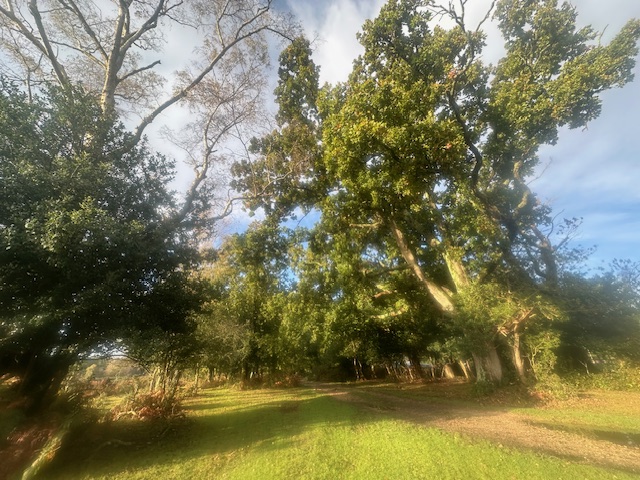Legal Obligations and Laws Surrounding Trees on Your Land

Trees form one of the most important views across the landscape and combined with their environmental benefits, are to be treasured. With carbon credits being brought to the fore in today’s climate change battle, woodland has become hot property. Even the tree in your back garden could be protected so make sure you understand your obligations.
Owning land with trees brings a host of legal responsibilities. Trees, while an asset to the environment, can become the focus of legal disputes, particularly when it comes to pruning, removal, or management. Below, the Godwin’s team outline the main legal obligations and duties for landowners regarding trees, including specific laws on Tree Preservation Orders (TPOs), conservation areas, ancient woodland, and liability surrounding trees.
What is a tree a preservation order? (TPOs)
Tree Preservation Order (TPO) is a legal mechanism used by local planning authorities (LPAs) in the UK to protect specific trees or groups of trees that provide significant environmental or aesthetic value.
- What does a TPO mean for landowners?
- If a tree on your land is protected by a TPO, you cannot cut it down, prune it, or carry out any other work without prior written consent from the LPA.
- Unauthorised work on a TPO-protected tree can result in fines of up to £20,000 or, for more serious offenses, unlimited fines in the Crown Court.
- How do I check if a tree has a TPO?
- During the conveyancing process we can check if the trees on the land you are buying are protected by a TPO which are shown as a local land charge on the Local Search.
- Post purchase we are able to check online to ascertain if specific trees on your land have the protection.
- Can you prune a tree with a TPO?
- Pruning is permissible, but it requires written consent. Applications must include detailed information on the proposed work and justification (e.g., safety concerns or disease). Emergency works, such as those required to remove a dangerous limb, may be carried out without prior consent, but you must notify the LPA afterwards.

Are there restrictions on trees in conservation areas?
Trees located in conservation areas receive automatic protection, even if they are not subject to a specific TPO.
- What are Conservation areas?
- These are areas designated for their special architectural or historic interest. Trees in these areas contribute to their character and are protected under Section 211 of the Town and Country Planning Act 1990.
- Obligations for landowners in Conservation areas
- You must notify your local council at least six weeks before carrying out work on a tree with a trunk diameter exceeding 75mm (measured at 1.5 meters above ground level). This notice is called a “Section 211 Notice.”
- The council may respond by issuing a TPO if it deems the tree worthy of long-term protection.
- Penalties for unauthorised work
- As with TPO-protected trees, unauthorised work on a tree in a conservation area can result in significant fines.
Are trees in ancient woodland and veteran trees protected?
- What is Ancient Woodland?
- Ancient woodland refers to areas continuously wooded since at least 1600 in England. These areas are irreplaceable due to their biodiversity and historical significance.
- Veteran trees, though not necessarily part of ancient woodland, are mature specimens with significant ecological or historical value.
- Legal Protections for ancient woodland and veteran trees
- Ancient woodland is protected under the National Planning Policy Framework (NPPF). Development impacting these trees is only permitted in exceptional circumstances.
- Local planning policies may also provide additional protections.
- Managing trees in ancient woodland
- Any work must comply with environmental laws, such as the Wildlife and Countryside Act 1981, which protects nesting birds and bats living in trees. You may also need to consult an ecologist.
Are landowners responsible for trees overhanging public highways and footpaths?
- Landowner Duties
- Landowners are legally obligated to ensure that trees on their land do not pose a hazard to public highways, pavements, or rights of way.
- Overhanging branches must be pruned to maintain clearances:
- 5.2 meters above roads.
- 2.5 meters above pavements.
- Enforcement by Local Authorities
- If a tree poses a hazard (e.g., obstructing visibility or causing damage), the local authority can issue a notice requiring remedial action. Failure to comply may result in the council undertaking the work and charging the landowner.
- It is very important as a landowner that you have third party insurance to cover falling trees which could cause an accident

Are trees in the garden of a listed building protected?
If your property is a listed building, additional restrictions apply to trees on your land.
- Listed building status
- The setting of a listed building, including its garden, is protected by law. Alterations, including tree removal, must preserve the character and setting of the property.
- Can you cut down a tree in a garden of a listed building?
- You may need both planning permission and listed building consent to remove or prune a tree, particularly if it contributes to the historic or aesthetic value of the property.
- Trees in conservation areas or with TPOs are subject to additional layers of protection.
- Consultation with authorities
- Always consult your local planning authority and, if applicable, heritage organisations to determine the necessary permissions before undertaking any work.
How Godwins can help
Godwins can help you acquire land which may be dotted with trees, or indeed your very own parcel of woodland. We raise specialist enquiries and searches so that you know whether the trees on your property are protected.
Please get in touch with the team if you would like legal advice on trees on your property.
